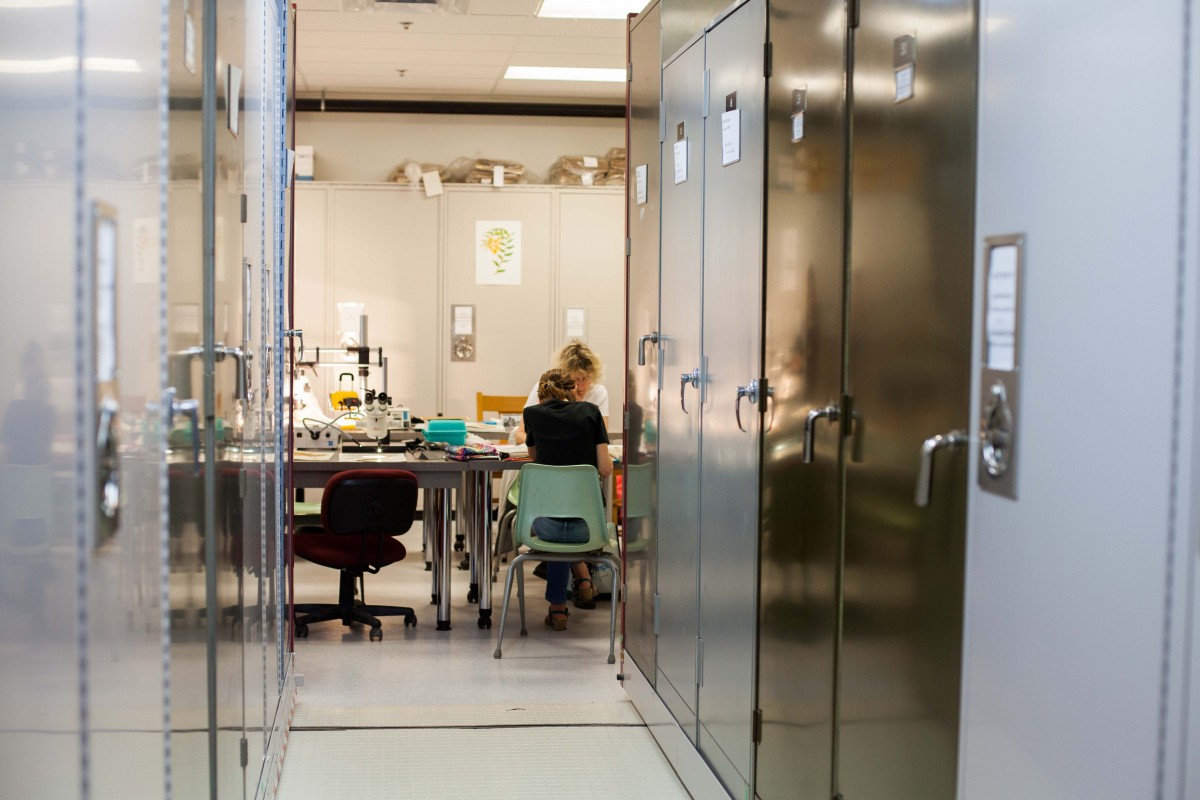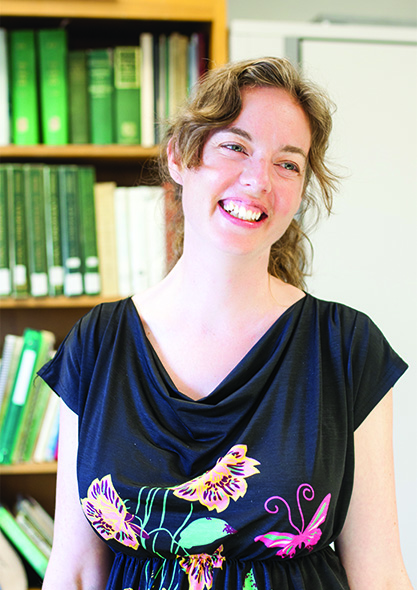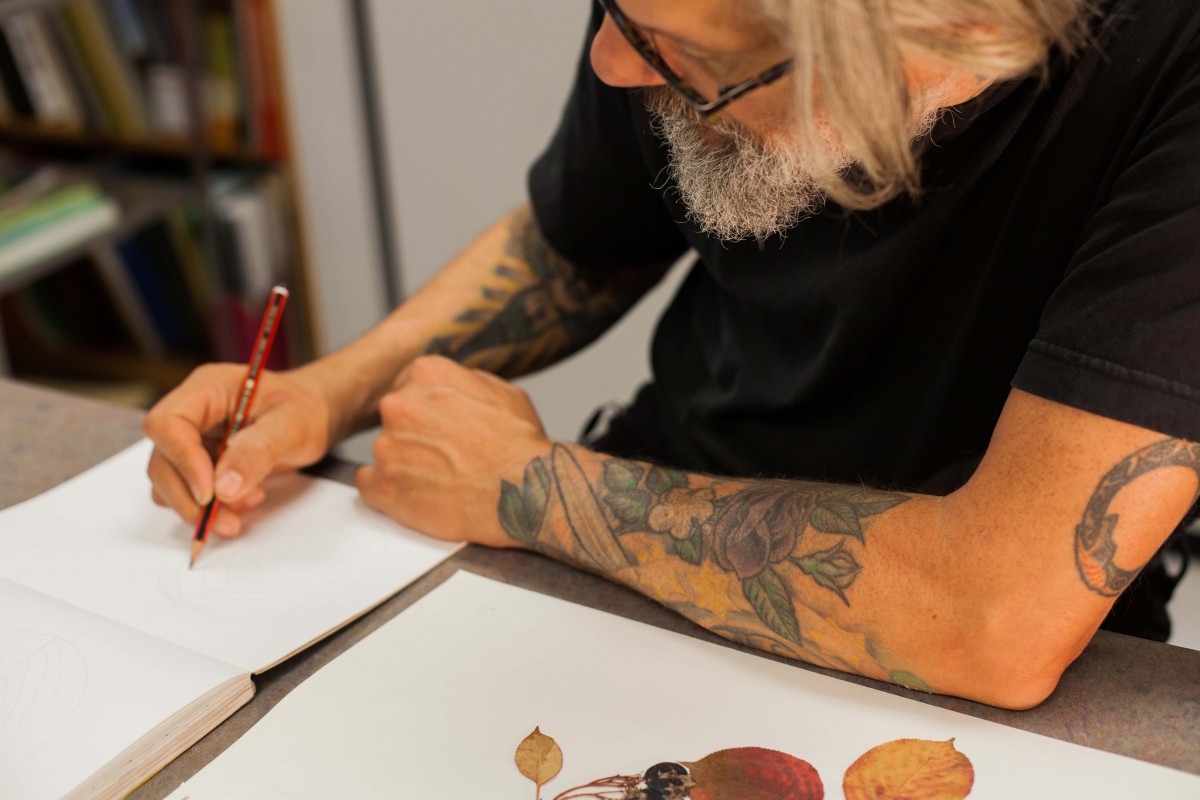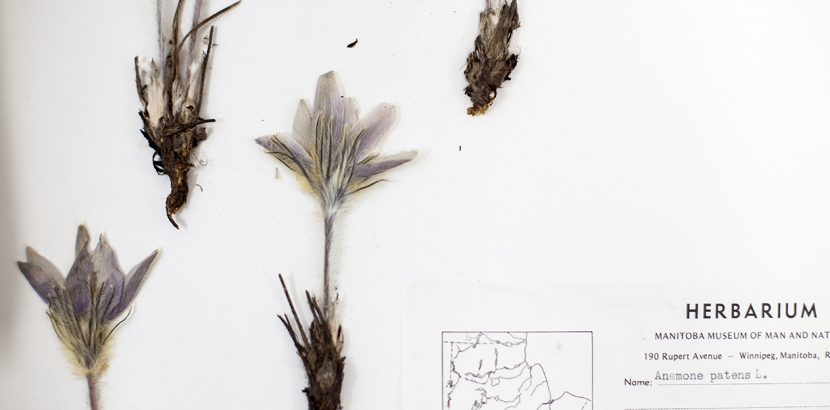Remembering our roots: UofM’s Herbarium catalogues Manitoba’s flora for generations


Ford is understandably proud of the body of data that’s been collected and stored in the herbarium. Over the past 125 years, the collection has grown to its current complement of over 80,000 specimens, which stands as the largest assemblage of Manitoban plants anywhere in the world. As such, the facility is accessed by researchers from around the globe.
The collection is housed in a compactor system, which consists of a series of moving cabinets on rails. Funded by a series of NSERC and CFI grants, the system allows the herbarium to hold far more specimens than would otherwise fit into the space. Each cabinet contains from 1,500 to 2,000 specimens.
What is also amazing is that these specimens not only provide information on a species morphology, habitat, and geographic range but also serve to document genetic variation.
“We’ve been able to sequence DNA out of at least fifty-year-old specimens, and all you need is a small plant fragment. There have been a number of studies that have been undertaken based almost exclusively on tiny plant fragments that we have taken off these specimens.”
One of the most exciting projects with which WIN is currently involved is the Flora of North America (FNA). FNA is a 30-volume book (published by Oxford University Press) and electronic database (housed at the Missouri Botanical Garden, St. Louis, MO) covering some 20,000 species of plants, about 7% of the world’s total. When completed, the Flora will be the definitive treatment of the plant diversity of North America, north of Mexico. It will summarize our current knowledge of species, their relationships, characteristics, and distributions and serve as a standard identification resource.
Ford acts as a regional coordinator for the project. “I supervise a team of regional experts who review all manuscripts covering species from Manitoba,

Saskatchewan, Alberta, Nunavut, and N.W.T. We review treatments for accuracy, in terms of ‘do the descriptions match the specimens, do the taxonomic keys allow you to identify plants, and is it truthful in terms of saying where the plants occur?’ Ford compiles all reviews and then sends them to the Missouri Botanical Garden in St. Louis, which is the organizational hub for this monumental project.
In addition to their work with FNA, Ford and Sawatzky are kept busy with the digitization of all the herbarium’s specimens. This involves taking high-resolution images of each one, as well as transferring the information from each label to the database. All of this information is uploaded to an online national database (canadensys.net), which acts as a virtual herbarium that’s accessible to anyone who’s is interested in knowing more about the plants of Canada. This might include environmental consultants who are working on vegetation studies here in Manitoba; research scientists writing taxonomic treatments on groups of North American plants, or those interested in understanding the distribution of a certain species.
Ford is also quite proud of the role WIN plays in the exchange and loan of plant specimens. Similar to an inter-library loan, Ford can contact another herbarium and ask to have any specimens that he might want to study shipped to him for an agreed upon period of time. WIN also exchanges specimens with other herbaria. The exchange program is “…the equivalent of collecting stamps or hockey cards, in that another herbarium will swap specimens with us. In this way, the collection is expanded. We add about 1,000 to 1,500 specimens per year through this initiative.”

Dry Media, artist workshop. Photo credit: Kira Koop.
Sawatzky explains that the herbarium’s community outreach isn’t exclusively scientific in nature. Artists visit in order to research plants for their artwork. To date, the herbarium has hosted three botanical art workshops, with ten artists being invited to each. Over the course of a weekend, invitees are able to look at the herbarium’s vast collection through microscopes, hear presentations, and research ideas for art based on the specimens. Each intensive workshop is followed by a group exhibit at a city gallery of the art inspired by the plants.
“It’s quite surprising, the diversity and quality of the art that actually comes from these research sessions. … It represents the herbarium in a completely different way, and usually off-campus in a way that allows members of the public, who have never heard of a herbarium, to see what we are all about. We hope to continue doing it.”
Ford understands the value of having a facility within the University that is accessible to the general public, and not only to the academic or scientific communities.
“It works at a number of levels. We have people visit who are highly trained botanists, research scientists who use this facility. At the same time, it’s also used by people that have only very passing interest in or knowledge of plants. It has this duality about it, in terms of working at so many levels of expertise. So people can get out of it what they want, depending on their particular questions or interests. I think that’s really cool.”
By Jo Davies

